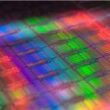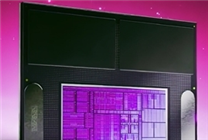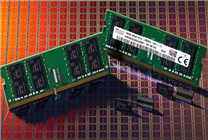Revolutionizing AI Performance with Distributed Reasoning
Summary:
- EXO Labs has unveiled a new "distributed reasoning" framework that significantly boosts AI performance.
- A unique setup using NVIDIA DGX Spark and Apple Mac Studio shows a 2.8x increase in efficiency.
- This innovative approach may redefine how AI computing power is harnessed, moving away from traditional single-device dependencies.
Introduction to Distributed Reasoning
On October 17, EXO Labs showcased groundbreaking advancements in AI performance through its new "distributed reasoning" framework. This framework addresses a pivotal decision facing tech enthusiasts: when investing in AI hardware, should one opt for the Apple Mac Studio or the NVIDIA DGX Spark?
EXO Labs conducted a comparative analysis utilizing two NVIDIA DGX Spark models alongside a Mac Studio equipped with the advanced M3 Ultra chip. The results were compelling, revealing a remarkable 2.8-fold increase in overall performance during tests focused on AI large language model (LLM) inference processes, compared to using a Mac Studio independently.
The Science Behind the Performance Boost
The core of this enhancement lies in EXO’s open-source project named EXO, designed to optimize the execution of large language models in diverse hardware environments. Traditional inference approaches rely heavily on single GPU accelerators, but the EXO framework automatically distributes workloads across multiple devices. This makes it possible to create an "AI Mesh" akin to a WiFi Mesh network, aligning various devices, from desktops to mobile units, in harmony.
Complementing Hardware Strengths
EXO’s testing highlighted the distinctions in functionality between the two hardware components. The NVIDIA DGX Spark, priced at approximately $3,999, emphasizes heavy computational performance, whereas the Mac Studio, costing around $5,599, excels in data bandwidth. By integrating these devices into a cohesive AI cluster, EXO is able to harness the strengths of both.
In terms of efficiency, the results are telling: the pre-filling speed of the DGX Spark surpassed that of the Mac Studio by 3.8 times, while the Mac Studio outperformed the DGX Spark in generation speed by 3.4 times. This dual-capacity usage showcases a symbiotic performance relationship.
Optimizing Inference Stages
The LLM inference process is typically broken down into two main stages:
- Prefill Stage: Focused on reading and processing input prompts, this phase is mainly constrained by computing performance.
- Decoding Stage: Responsible for generating new tokens sequentially, this stage is primarily limited by memory bandwidth.
EXO’s strategy assigns the prefill tasks to the DGX Spark, leveraging its computational prowess, while handing off bandwidth-sensitive decoding tasks to the Mac Studio. This layered coordination allows both devices to operate concurrently, enhancing overall efficiency.
The benchmark tests utilizing the Meta Llama-3.1 8B model evidenced a performance leap of 2.8 times when compared to using the Mac Studio alone.
Expanding AI Computing Power Affordably
EXO’s experimental design presents a transformative approach to AI expansion that deviates from traditional methods dominated by single-machine acceleration. Instead, it proposes a model where collaboration among different hardware components elevates overall computing power without incurring exorbitant costs typical of large data centers.
NVIDIA has introduced a similar ideology in its next-generation Rubin CPX platform. The architecture splits computationally intensive context construction tasks to the Rubin CPX processor, while the decoding tasks are handled by a standard Rubin chip equipped with high-bandwidth HBM3e memory, mirroring EXO’s approach.
The Future of EXO and Distributed Reasoning
Currently, the EXO framework is in its early access version 1.0 phase and still under development. The open-source version released in March 2025 (version 0.0.15-alpha) is a significant milestone, with future updates expected to offer features such as automatic scheduling, KV streaming, and heterogeneous hardware optimization.
Although EXO remains a research-level tool unsuitable for general consumer use, its demonstrative results highlight a promising pathway. By intelligently managing distinct hardware resources, the distributed reasoning architecture can markedly enhance AI functionality, paving the way for a new era in AI performance.
Conclusion
In an age where AI drives innovation across sectors, the work done by EXO Labs signifies a substantial leap forward. The exploration of distributed reasoning not only enhances the performance of AI applications but also sets the stage for a more collaborative future in computing. As technology evolves, the implications of such frameworks could lead to an explosion of possibilities for developers and end-users alike.
This article outlines the significant advancements brought forth by EXO Labs, discussing the theoretical underpinnings and practical implications of distributed reasoning in AI systems. By merging hardware efficiencies, this innovative approach has the potential to revolutionize the landscape of AI performance, making it more accessible and efficient than ever before.







